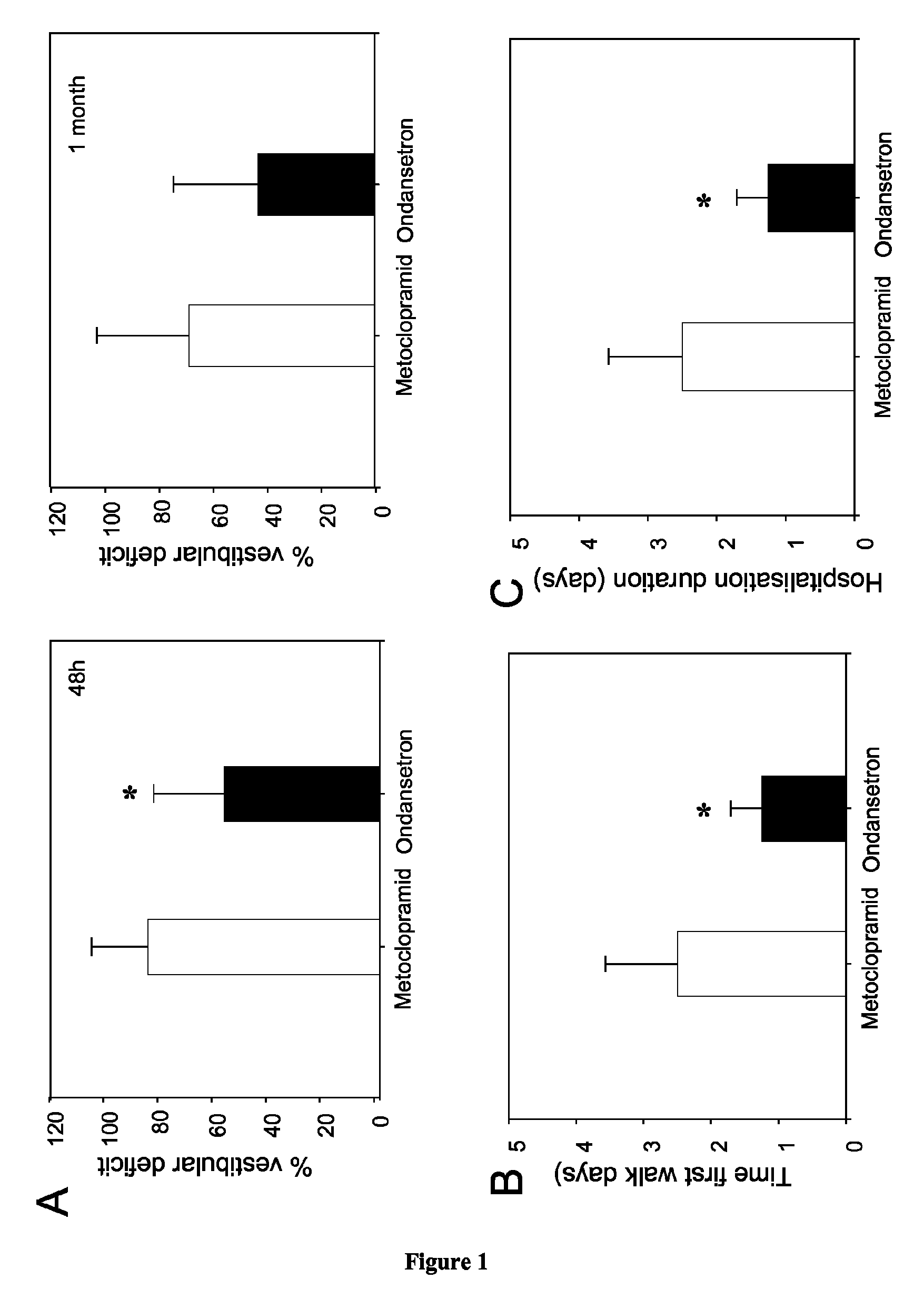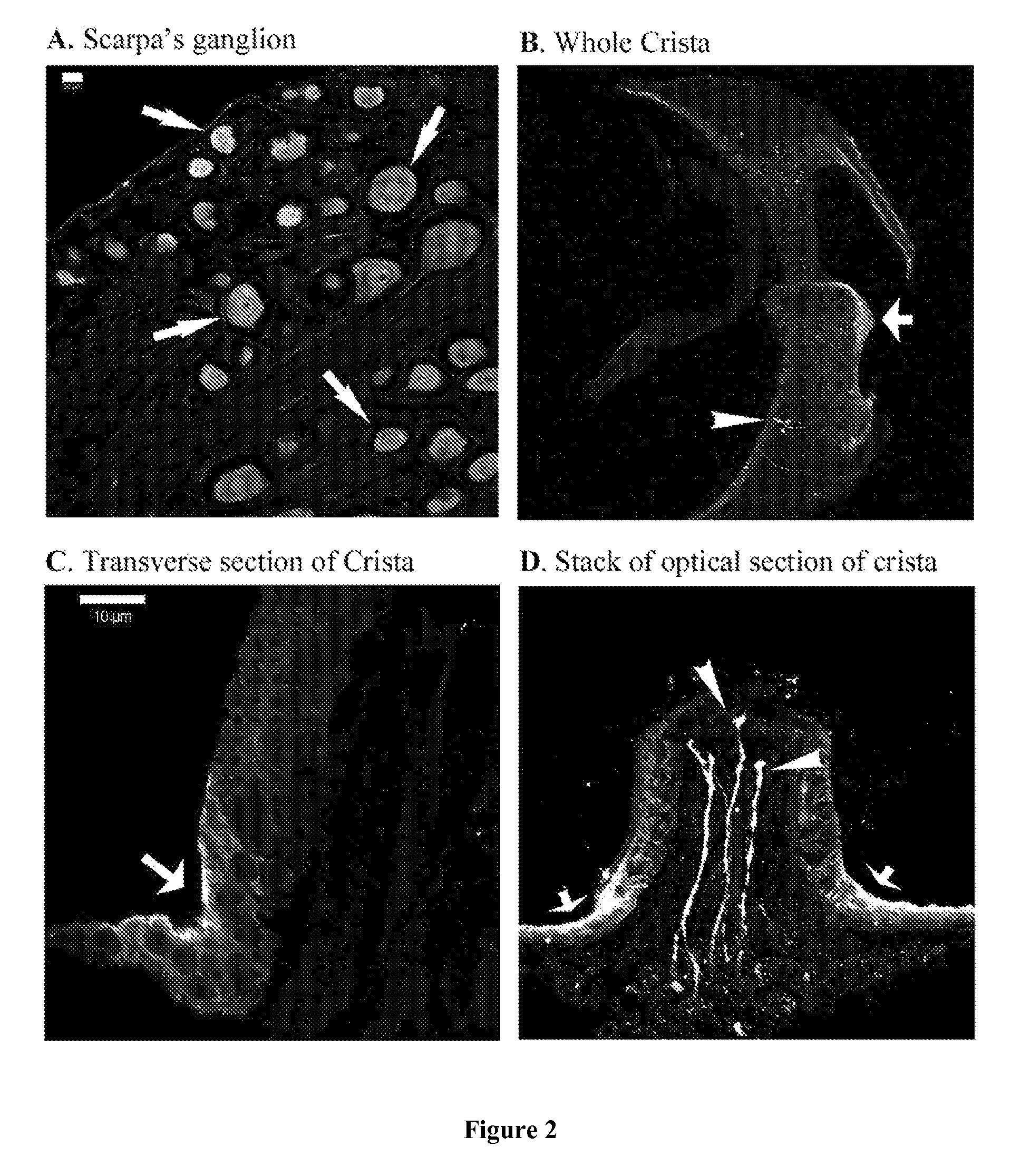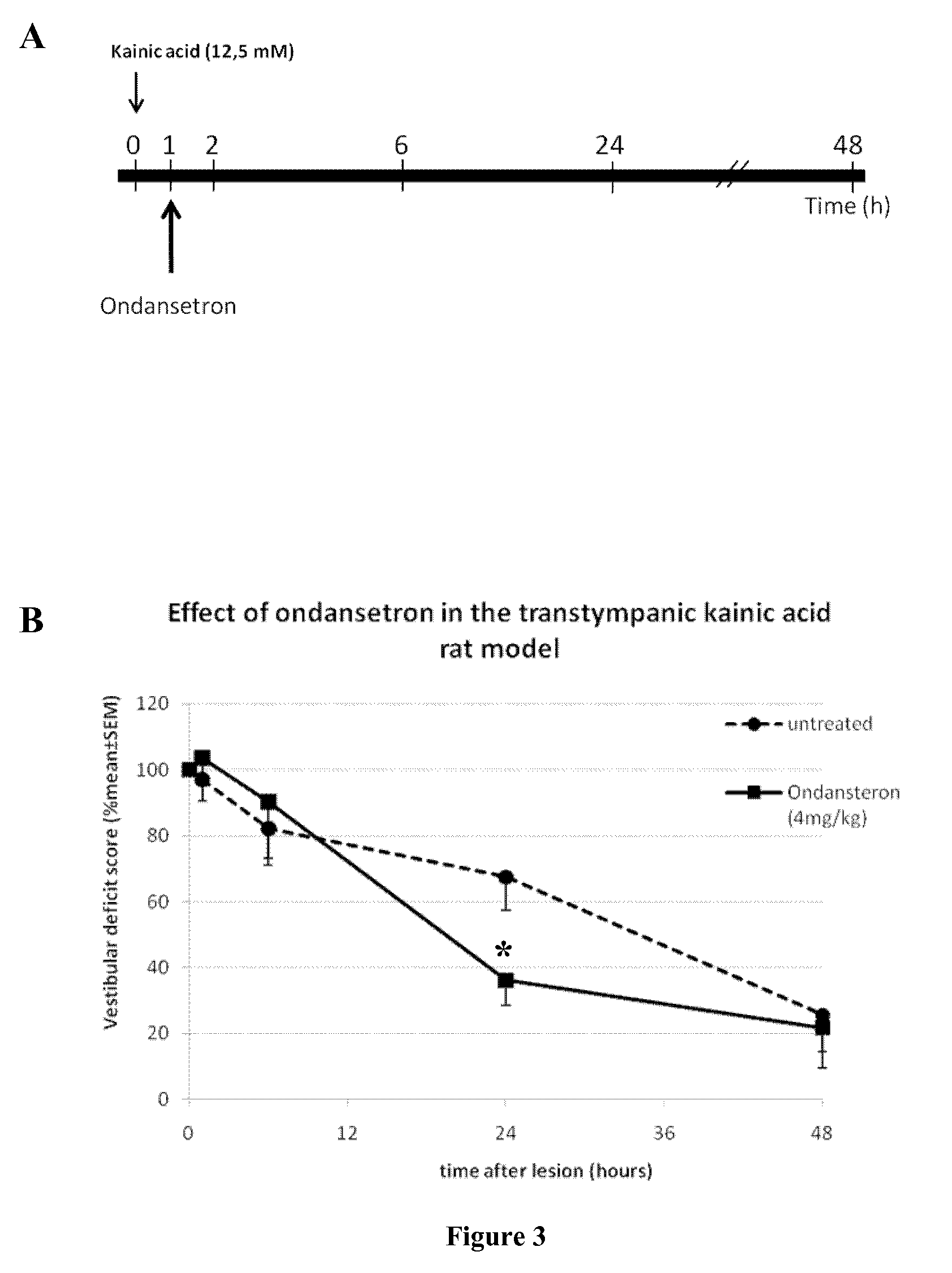Methods of treating lesional vestibular disorders by administering serotonin 5-HT3 receptor antagonists
a technology of serotonin and receptors, applied in the field of lesional vestibular disorders, can solve the problems of affecting the recovery of vestibular neuritis, and affecting the quality of life, and affecting the ability to work. and other problems, to achieve the effect of improving the quality of li
- Summary
- Abstract
- Description
- Claims
- Application Information
AI Technical Summary
Benefits of technology
Problems solved by technology
Method used
Image
Examples
example 1
Reduction of Vestibular Deficit Following Acute Vestibular Neuritis by Ondansetron (FIG. 1)
[0129]Methods: A clinical study conducted by the inventors at the Centre Hospitalier Universitaire (CHU) of Montpellier was carried out. Random clinical tests were performed on 20 patients. Patients were selected on the suspicion of vestibular neuritis started for less than 24 h before the hospitalization. The patients were all administered with methylprednisolone and valacyclovir, and either a 5 days treatment with Metoclopramide (30 mg / d, n=10) or with Ondansetron (8 mg / d, n=10). The functional evaluation was based on a early VNG (vestibulonystagmography) test (realized 24 to 48 hours after the beginning of the vestibular deficit) and a VNG at 1 month. The hospitalization duration and the date of the first walk were also recorded.
[0130]Results: Regarding the early VNG, the vestibular deficit was less pronounced in patients administered with ondansetron (56.53% versus 84.38%, p=0.03). At 1 mo...
example 2
The Cellular Targets of Serotonin 5-HT3 Antagonists are Expressed in the Vestibular Endorgans
[0132]The putative direct effect of serotonin 5-HT3 receptor antagonists on the vestibule is supported by previous report that the serotonin receptors are expressed in the inner ear and specifically in the vestibular endorgans (Johnson and Heinemann, 1995; Gil-Loyzaga et al., 1997), and recent histological experiment from inventors that the 5-HT3 receptors proteins are present in the vestibular epithelia.
[0133]Methods:
[0134]Immunohistochemical localization of pharmacological targets in the vestibule.
[0135]We anesthetized female adult rats (Wistar; 200-220 g, n=2) with pentobarbital (0.4%). Animals were perfused transcardially with heparin PBS (0.01M) followed by a fixative solution (4% paraformaldehyde, 1% picric acid, 5% sucrose) and samples post-fixed. We embedded vestibular ganglia and epithelia in 4% agarose, and cut 40 μm thick sections. Pre-incubation in blocking solution (0.5% fish ge...
example 3
Validation of the Restorative Effect of Ondansetron
[0138]Present example intends to validate on animal models of vestibular deficits the restorative effect on the vestibular endorgans of a serotonin 5-HT3 receptor antagonist that may selected from the group consisting of ondansetron, granisetron, tropisetron, or palonosetron observed in human. It also intends determining the biological process (protection / repair) involved in that process. This is assessed by comparing the time courses of histological damages and vestibular deficits in both models of unilateral and bilateral vestibular deficits under application of said serotonin 5-HT3 receptor antagonist. Combination of the two distinct animal models of vestibular deficits allows determining the benefice of using said serotonin 5-HT3 antagonist in conditions of unilateral or bilateral vestibular deficits. To our knowledge, they are the first paradigms focused on the mammal vestibular system. Determination of the biological process i...
PUM
| Property | Measurement | Unit |
|---|---|---|
| time | aaaaa | aaaaa |
| thick | aaaaa | aaaaa |
| height | aaaaa | aaaaa |
Abstract
Description
Claims
Application Information
 Login to View More
Login to View More - R&D
- Intellectual Property
- Life Sciences
- Materials
- Tech Scout
- Unparalleled Data Quality
- Higher Quality Content
- 60% Fewer Hallucinations
Browse by: Latest US Patents, China's latest patents, Technical Efficacy Thesaurus, Application Domain, Technology Topic, Popular Technical Reports.
© 2025 PatSnap. All rights reserved.Legal|Privacy policy|Modern Slavery Act Transparency Statement|Sitemap|About US| Contact US: help@patsnap.com



